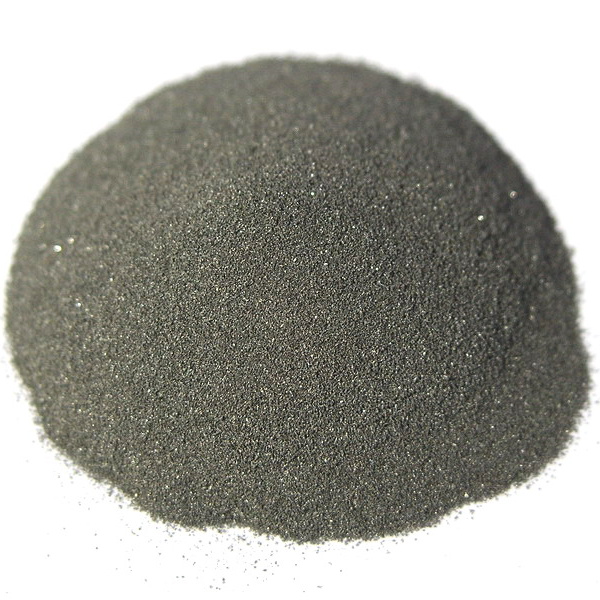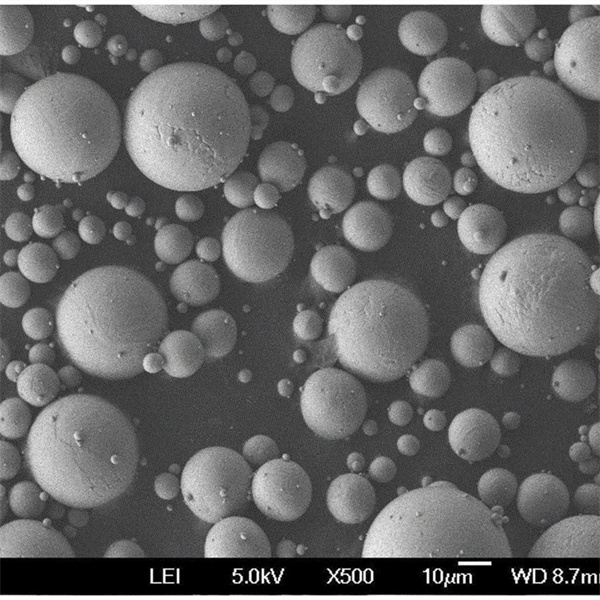金属钼粉概述
钼粉是一种由钼金属制成的难熔金属材料,以其极高的熔点、高温强度、耐磨性和耐腐蚀性而著称。钼粉的主要特性使其成为航空航天、国防、汽车和发电等行业制造零件和复合材料的理想选择。
表 1:钼粉概述
| 属性 | 说明 |
|---|---|
| 组成 | >99% 纯钼 |
| 主要特性 | 高强度、硬度、耐热性/耐腐蚀性、润滑性 |
| 生产方法 | 气体雾化、电解、羰基工艺 |
| 颗粒大小 | 1 - 100 微米 |
| 主要应用 | 合金剂、热喷涂粉末、3D 打印 |
钼的熔点为 2623°C,在纯金属中位居第二,即使在 2000°C 以上也能保持强度,因此在苛刻的环境中具有独特的优势。钼粉具有优异的耐腐蚀性和润滑性,即使在高温条件下也能保持良好的性能,为各行各业的粉末冶金应用提供了无与伦比的性能。

钼粉类型
钼粉 通过气体雾化、电解或羰基分解工艺以各种形式进行商业生产。这些生产技术可产生不同的粒度分布、形状和纯度水平,以满足主要应用类别的需要。
表 2:钼粉的主要类型
| 类型 | 说明 | 典型用途 |
|---|---|---|
| 雾化气体 | 5-100 微米的球形粉末 | 热喷涂、MIM 合金 |
| 电解 | 1-10 微米的不规则薄片 | 烧结部件、电子设备 |
| 羰基 | 球形小于 1 微米,纯度最高 | 化学/冶金应用 |
雾化气体 具有可调形态和紧密颗粒分布的粉末是最广泛采用的类型,因为它适用于压制、快速成型制造、热喷涂和合金化。
同时,超细 羰基钼粉 通过分解产生的二氧化硅可用于需要高化学纯度的特殊用途,如冶金添加剂或催化剂。高表面积也适合烧结应用,但成本限制了其应用。
了解应用要求有助于制定适当的钼粉规格,以实现最佳性能。
金属钼粉的特性
钼粉 在机械、热学、电学和化学特性方面具有卓越的综合性能,可在具有挑战性的工作环境中提升性能。
表 3:钼粉性能概述
| 物业 | 价值 | 重要意义 |
|---|---|---|
| 熔点 | 2623°C | 高温下仍能保持强度和硬度 |
| 密度 | 10.22 克/立方厘米 | 实现重合金配方 |
| 实力 | 500 兆帕(73 千卡/平方英寸) | 可承受高机械负荷 |
| 导热性 | 138 W/mK | 散热能力 |
| 电阻率 | 5.7 微欧-厘米 | 电子设备热管理 |
| 摩擦系数 | 0.1-0.3 | 在真空环境中保持润滑性能 |
高温强度、耐腐蚀性、低摩擦性和导热性/导电性等关键属性可满足潜在革命性粉末冶金应用的关键性能需求。
此外,与其他稀土元素相比,钼的高密度和 100% 的可回收性使其成为一种生态友好和可持续发展的金属选择。 这可能会破坏电池、磁铁、医疗设备、航空航天部件和其他产品中的钴或钨等元素。
了解强度、熔点、密度、电阻率、硬度等特性在烧结过程中的演变过程,有助于制定适当的粉末规格和加工参数,以实现最佳的使用性能。
生产方法 钼粉
商用钼粉主要采用三种生产工艺,以达到客户所需的粒度、形态、纯度、晶体结构和粉末特性。
表 4:钼粉生产路线比较
| 方法 | 说明 | 典型纯度 | 成本因素 |
|---|---|---|---|
| 气体雾化 | 惰性气体分解熔流 | >99% Mo | 定价与钼价一致,高纯度获得溢价 |
| 电解 | 阳极溶解成粉末片状 | 99.8%+ Mo | 耗电量大,材料产量低 |
| 羰基工艺 | 热分解成细粒 | 99.99%+ Mo | 严格控制流程,生产商数量有限 |
气体雾化 可提供最广泛的粉末尺寸和形态,是商业和研究领域最广泛采用的粉末类型。
与此同时 羰基工艺 可为存在污染风险的特殊化学工艺应用提供所需的极高纯度。
选择合适的生产方法需要平衡成本、颗粒特性、纯度要求和可用性等因素。
钼粉产品规格
钼粉必须满足与成分、粒度分布、形态、纯度水平、晶体结构和微观结构相关的严格属性规范。制造商利用先进的质量控制工具来验证钼粉是否符合要求。
表 5:典型钼粉规格
| 参数 | 典型规格 | 测试方法 |
|---|---|---|
| 粒径分布 | 根据客户要求(1-100 微米) | 激光衍射颗粒分析仪 |
| 化学 | >99% 钼 | ICP 质谱仪 |
| 氧气/氮气 | < 500 ppm | 惰性气体聚变分析 |
| 形态学 | 球形 | 扫描电子显微镜成像 |
| 纯净 | 99.9% 至 99.9999% | GDMS 微量元素分析 |
| 表观密度/抽头密度 | 35 至 50% / 65 至 80% 理论值 | 霍尔流量计漏斗 |
| 晶体结构 | BCC | X 射线衍射 |
控制粉末特性,如流动性、表观密度和敲击密度、氧/氮含量以及微观结构相,可确保实现最佳的粉末铺展、压实、烧结和最终零件性能。
钼生产商通过以下程序不断加强质量保证工作:
- 关键参数的统计过程控制监测
- 采样率和测试频率数据分析
- 员工预防污染培训
- 通过 ISO 9001:2015、AS9100D 和 ISO 13485 等标准认证
这推动了医疗、航空航天、国防和工业细分市场在产品一致性、可追溯性和客户规格一致性方面的持续改进。
钼粉的等级和标准
作为一种广泛应用于航空航天、石油天然气、国防和发电等领域的工程材料,钼粉产品必须符合各种纯度等级和国家/国际标准。
表 6:金属钼粉的常见等级和标准
| 标准 | 说明 | 所需属性 |
|---|---|---|
| ASTM B939 | 涵盖电解钼粉规格 | >99.8% 钼、氧极限、粒度分布 |
| SAE AMS 7871 | 用于气体雾化粉末的航空航天材料规范 | 化学、粒度分布、表观密度 |
| ISO 21109 | 设定等离子喷涂级粉末的要求 | 粒度分布、流速 |
| 自定义等级 | 针对具体应用的粉末变体 | 根据客户的个性化要求 |
此外,随着钼粉在各行各业的应用不断发展,美国材料与试验协会(ASTM International)等国家机构和专业贸易团体支持围绕材料规格和测试方法的持续开发。
材料制造商、MIM 和 AM 中的零件制造商以及最终用户之间的研究合作,也有助于围绕合金添加、粒度范围或污染物限制等因素优化定制粉末等级的鉴定。
金属钼粉的应用
由于在极端温度强度、耐磨/耐腐蚀性、导热性、润滑性和环境稳定性方面取得了优异的平衡、 钼粉 在各行各业实现突破性的性能提升。
表 7:钼粉的主要用途
| 应用 | 说明 | 优势与替代方案 |
|---|---|---|
| 合金剂 | 添加到钢和超级合金中 | 高温下的强度和硬度 |
| 热喷涂涂层 | 抗腐蚀/侵蚀的耐磨薄膜 | 硬度和润滑性优于碳化铬替代品 |
| 烧结 PM 部件 | 部件的净形制造 | 1800°C 以上的高强度与钨相比 |
| 电子产品 | 设备/工艺的热管理 | 铝替代品的双重导电性 |
| 核反应堆 | 极端温度部件 | 结构稳定性优于铬/钽材料 |
不断扩大的研发工作重点是为钼金属粉末在以下领域的应用提供新的可能性:
石油和天然气勘探
- 耐腐蚀/耐磨损的井下工具和钻井设备
- 用于高压泵的阀门和密封件
汽车/航空航天
- 活塞、发动机和排气部件可承受极端温度
- 高密度合金的轻量化机会
医疗
- 利用生物兼容性和高强度的植入物
- 可反复消毒的外科工具
三维打印
- 利用钼粉定制合金配方,量身定制特性
- 耐火金属支撑结构
钼具有独特的热稳定性、机械稳定性、电气稳定性和环境稳定性,这使得这种可持续材料成为未来十年粉末冶金技术创新的主要候选材料。
热门金属钼粉供应商
许多领先的金属粉末生产商都提供钼粉成分,以满足从特殊研究应用到大批量商业领域的需求。主要的多种金属供应商和专业的钼加工商都活跃在这个市场上。
表 8:领先的钼粉制造商
| 公司名称 | 说明 | 生产能力 |
|---|---|---|
| H.C. Starck 解决方案 | 广泛的钼粉组合,包括定制合金 | 年产多吨的所有主要生产路线 |
| Molymet | 顶级钼化学品和粉末处理器 | 金属之外的高纯度钼氧化物、碳化物、氮化物 |
| JDC | 具有雾化和电解能力的日本粉末领导者 | 以钼粉为重点的不锈钢和合金钢系列 |
| 计划 | 耐火金属粉末专业技术 | 围绕钼、钨、钽体系的定制合金开发 |
| Mi-Tech 钨金属公司 | 美国主要的钨粉和钼粉生产商 | 电解钼片、氧化物、其他化合物 |
随着未来五年钼粉在医疗、航空航天、汽车和工业领域的应用加速,这些行业领导者将继续投资于生产能力、质量改进和新成分开发,以满足最新的应用需求。
钼粉成本分析
作为一种特殊的小金属,钼粉的价格随着市场供需动态而波动。不过,与钨和钽等难熔金属相比,钼粉在成本方面仍有很大优势。
表 9:钼粉成本分析
| 参数 | 典型范围 | 驾驶员 |
|---|---|---|
| 钼金属价格 | 每公斤 $25-40 | 原矿供需波动 |
| 钼粉 | 每公斤 $50-150 | 纯度等级、生产路线、销售渠道 |
| 钨粉 | 每公斤 $50-250 | 产量低于中国,供应商有限 |
| 钽粉 | 每公斤 $400-1000 | 非常稀有的矿物供应 |
例如,使用气体雾化方法,纯度为 99.9% 的钼粉散装售价约为每公斤 $60。与此同时,纯度为 99.99% 的超低氧变体每公斤售价超过 $140 的 2 倍。
与钨粉和钽粉相比,由于钼的矿产储量更大、采矿产量更高,因此钼在成本方面仍具有显著优势。 这使得钼粉解决方案能够在汽车、航空航天、工业加热甚至医疗植入物等领域取代竞争对手的耐火金属选择。
在未来十年内,由于钼粉在极端温度特性、制造多功能性和经济可行性之间的独特平衡,市场采用率将不断提高,除非产能大幅扩张,否则将出现供应短缺。这可能表明,随着需求增长超过矿业生产增长,钼粉的价格将超越当前的周期性商品低迷期。
钼粉应用的未来展望
不断扩大的研究和商业化工作侧重于利用钼的优异平衡特性,这意味着钼基粉末合金将在交通、能源、医疗、国防和工业加热领域得到更广泛的应用。
市场分析师预测,随着新应用取代传统合金和难加工材料,未来 5 年全球对钼金属和钼合金的需求年复合增长率将超过 6%。特别是粉末冶金制造工艺,如金属注射成型、添加剂制造和钼合金热喷涂,与铣削产品相比,有望实现高于平均水平的增长。
然而,在采矿能力没有显著增长的情况下,钼原矿的可持续供应可能会面临与能源和工业部门的快速需求扩张相匹配的压力。虽然目前正处于周期性衰退期,但长期基本面支持钼产品在十年中期重新面临价格上涨的压力,除非有大量新的采矿项目。

常见问题
问:哪些合金元素最适合与钼粉混合?
答:镍、铬、硅、硼、碳和钴是常见的合金添加剂,用于提高烧结性、强度、硬度或高温抗蠕变性,具体取决于应用目的。
问:什么粒度范围最适合烧结钼粉?
答:5 至 25 微米的气体雾化钼粉在大多数制造部件应用中都能显示出最佳的压制和烧结性能。
问:使用 AM 方法加工钼粉有多难?
答:激光/电子束系统的精心参数开发对于控制卷曲、气孔问题或微裂纹等缺陷至关重要。热等静压有助于最大限度地提高密度和机械性能。
问:为什么高纯度对钼粉很重要?
答:氧气、氮气和碳等污染物会显著改变韧性到脆性的转变温度,从而降低可制造性,并在印刷或烧结过程中产生自发裂纹。更严格的化学控制可将此类问题降至最低。
问:哪些应用会对钼粉产品造成腐蚀风险?
答:盐水、酸性硫/盐化合物和熔融锌会侵蚀钼。添加少量铬、镍或钴合金可提高耐腐蚀性。保护性涂层也可以通过定期维护来减少在有问题的环境中出现的问题。






